Promat Technical Support
Contact our technical support team with your questions on passive fire protection solutions, our products and systems or installation advice...
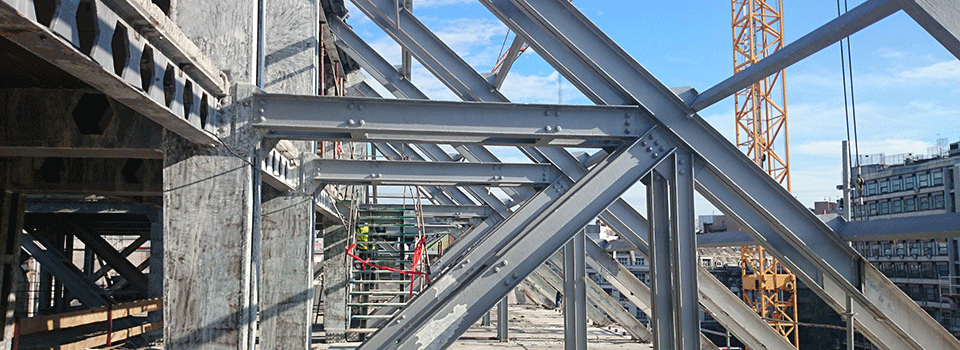
Modern global trends in building construction are moving towards an increased use of steel, regardless of the building type. Steel offers many advantages over other construction materials at various stages of its lifecycle, from production and architecture to use in construction, not to mention its recyclability that can reach almost 100 %. In addition to these positive traits, fire protection of steel structures is also relatively less demanding than that of other materials.
However, steel also has some properties that make it a less than ideal material for construction use. More specifically, its sensitivity to corrosion and poor load-bearing capacity in case of fire might be considered two of its most problematic properties. Although steel is classified as a non-combustible material, increased temperature can cause it to lose some of the properties that make it popular in construction, causing it to deform and the steel structure to collapse in a very short time (Graph 1).
Nowadays, there are different solutions available for the fire protection of steel structures. The following three systems are prevailing: intumescent fire stopping paints, cladding with fire stopping boards and fire stopping sprays. A majority of steel structures use intumescent paints - approx. 70 %, while cladding with boards are used by approx. 25 % and fire stopping sprays by approx. 3 %, (data for Great Britain, Tata Steel, Steel Construction Fire Protection 2013). In addition to the aforementioned systems, there are also some other systems, such as cladding with fire resistant sheets, the pouring of steel columns in concrete, partial pouring in concrete, the filling of columns with bricks made of foamed concrete and the pouring of beams halfway into the concrete ceiling. The use of these methods is decreasing.
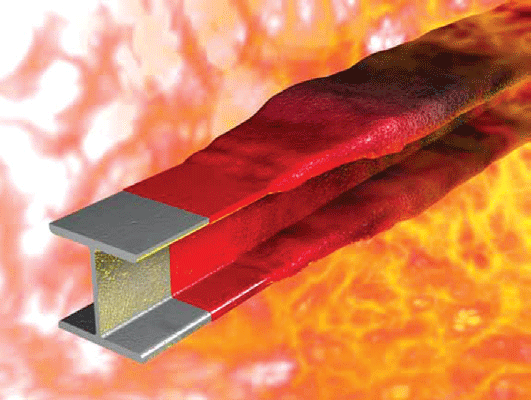
Intumescent paints are the most widely-used system because they:
Furthermore, they can be applied already in the workshop or on site – depending on the paint type and weather conditions.
Intumescent fire stopping paints are either thin-layer paints, which are mostly water-based or solvent-based, or thick-layer paints which are epoxy-based and intended mainly for hydrocarbon fires. The thin-layer water-based intumescent paints are the prevailing system, especially due to their environment friendly production and use and due to the good properties of the cured layer. Prior to primer application the steel profiles should be sand-blasted to the grade Sa 2.5. When applying, a layer of compatible anti-corrosion primer should be applied first, followed by the intumescent paint and finally, in most cases, the protective layer – top coat, which may be a generally available covering paint for steel, but it should be compatible with the intumescent coating. In addition to protection against moisture, the protective layer also has an aesthetic purpose and comes in different colours.
The intumescent paint works in the following way: when the temperature is increased, the structure of colour, with the help of catalysts such as phosphoric acid, expands and forms the carbon foam which expands in a ratio of 1:50. A typical layer 1 mm in thickness thus expands to a thickness of 50 mm. The usual dry film thicknesses depend on the individual requirements and may range from between 100 to 5000 microns. As the carbon foam is a good insulator, the speed of heat energy transfer to the steel beam is reduced and, as a result, the time in which a dangerous overheating occurs is significantly extended.
Regarding the limitations when using the fire stopping paint, we may take into consideration their sensitivity to the application conditions, for example when the rust is not sufficiently sand-blasted from the beams, when the paint is applied at too low a temperature (at temperatures below 10 °C the application is practically no longer possible), in rain or at dew point or when an incompatible basic top coat is used. They shall be applied by using the technology of airless spraying or manually by using rollers. For higher levels of fire resistance several layers are required. The application time might be a limitation as it should be taken into consideration that the intermediate drying of layers is required (usually 24 hours). Intumescent paints have a limited guaranteed service life and are relatively sensitive to abrasion and impacts. The fire resistance of intumescent paints may range from R 30 to R 180. It is the most advisable to use R 60 as the maximum. Above that value the number of layers and the thickness are irrational and also actual reliability in case of a real fire decreases as the layers fall off. Furthermore, it is necessary to mention the particular feature at testing the fire stopping paints, namely, the tests performed at opened profiles I, H and U are not valid on hollow profiles and vice versa. It should be checked previously if the manufacturer has one or the other test or both at the same time. In order to be allowed for use in the EU, the intumescent fire stopping paints should be tested according to EN 13381-8, their combustibility should be classified according to EN 13501-1 and they should be classified for resistance class according to EN 13501-2. They should also have the European Technical Assessment (ETA) according to ETAG 018, the certificate of constancy of the product (COC), which all together permits issuing the CE mark, or any other proofs in accordance with the Regulation on Construction Products.
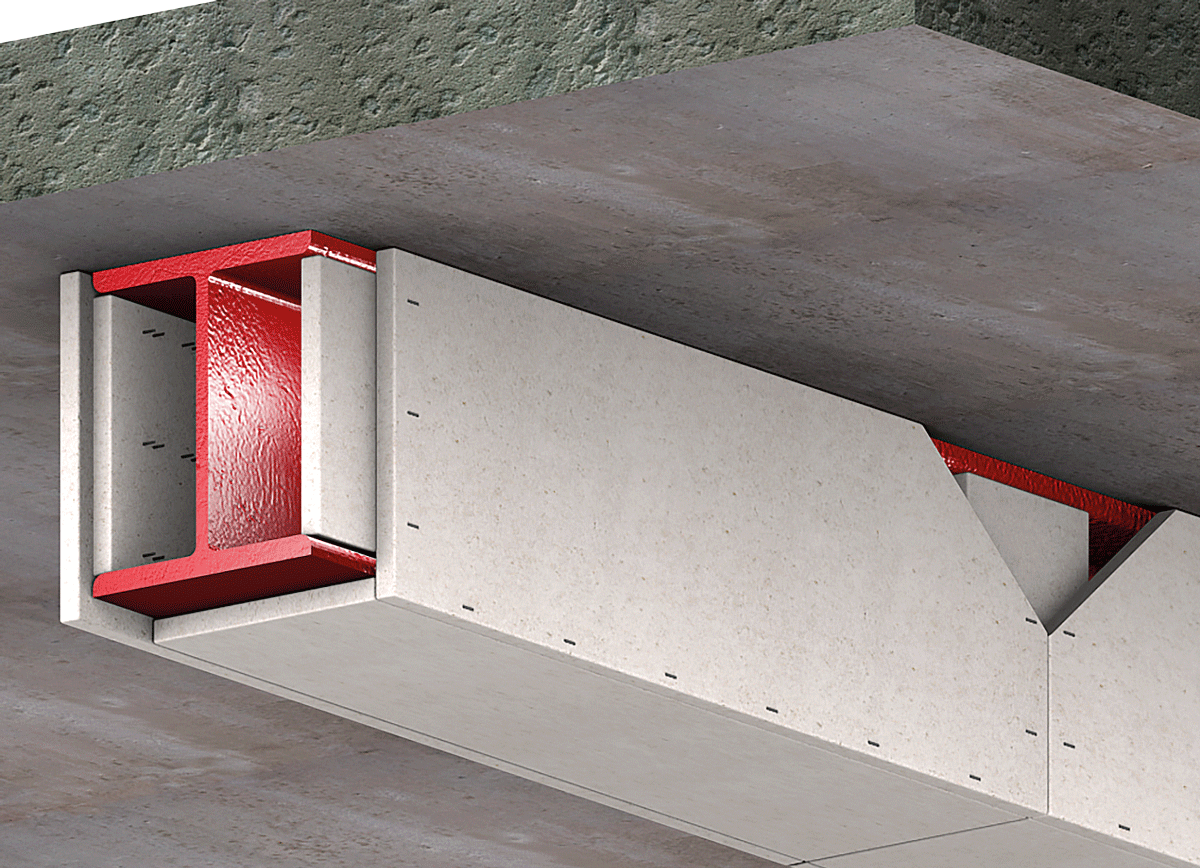
Fire stopping boards are the next system for the protection of steel structures. Typically, they are mineral boards (i.e. made of calcium silicate) reinforced with fibers and fillers. Depending on the manufacturer they can also be resistant to humidity and frost and can be processed and/or painted with decorative paints. The board thicknesses depend on the manufacturer and the fire protection level and ranges from 10 mm to 60 mm. The boards are installed on site and are suitable for R30 to R180, whereby the use from R60 on is recommended, mainly due to higher price. The procedures for processing and installation are relatively simple (cutting with a saw, screwing, stapling). As there are no specific time and temperature limitations, the boards can be applied throughout the whole season. Fire stopping boards are the most reliable fire protection of steel structures, which has also been proven in real circumstances. Fire stopping boards should be tested according to EN 13381-4, their combustibility should be classified according to EN 13501-1 and their fire resistance class according to EN 13501-2. They should also have the European Technical Assessment ETA according to ETAG 018, the certificate of constancy of the product (COC), which all together permits issuing the CE mark, or any other proofs in accordance with the Law on Construction Products.
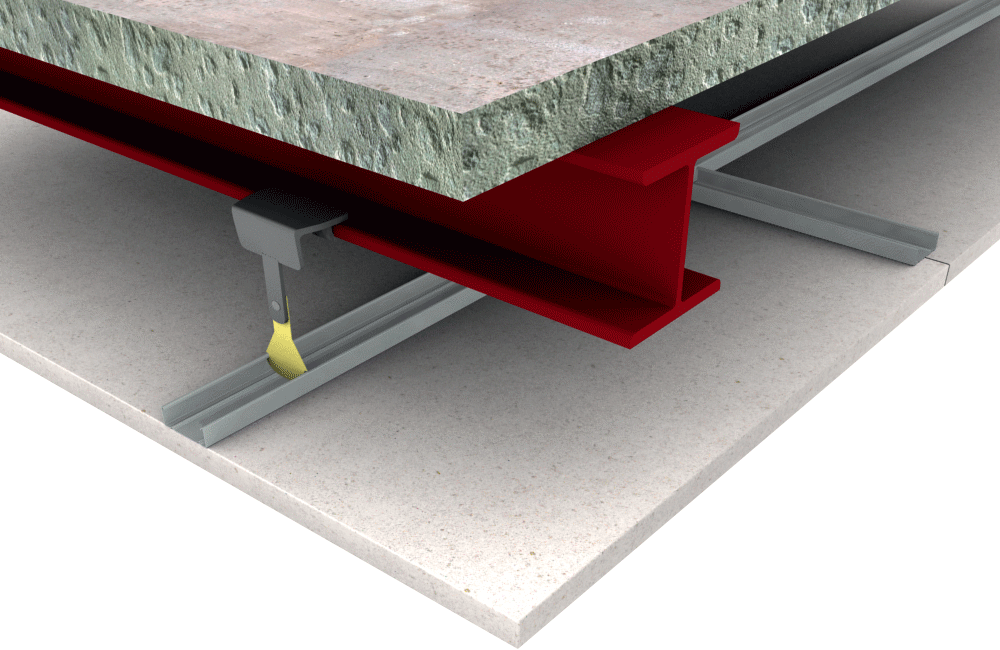
In addition to direct cladding, other options are also possible with fire stopping boards. In practice, it can often happen that the cladding of the ceiling structure is too complex or too expensive. In such cases, depending on the given situation, a fire stopping membrane can be made.
This is especially useful with composite structures or truss, which are always difficult to protect. When selecting such systems, caution is required as the fire stopping membrane should meet the specific requirements and should be, in case of a horizontal membrane, tested in accordance with EN 13381-1, which ensures the classification of the structure load-bearing capacity Class R ... or tested in accordance with EN 1365-2, which ensures the load-bearing capacity and fire resistance REI...
Attention: The systems of fire stopping membranes which are tested according to EN 1364- 2 are not sufficient in this cases, as they have the fire resistance EI … and do not provide the load-bearing capacity of the structure.
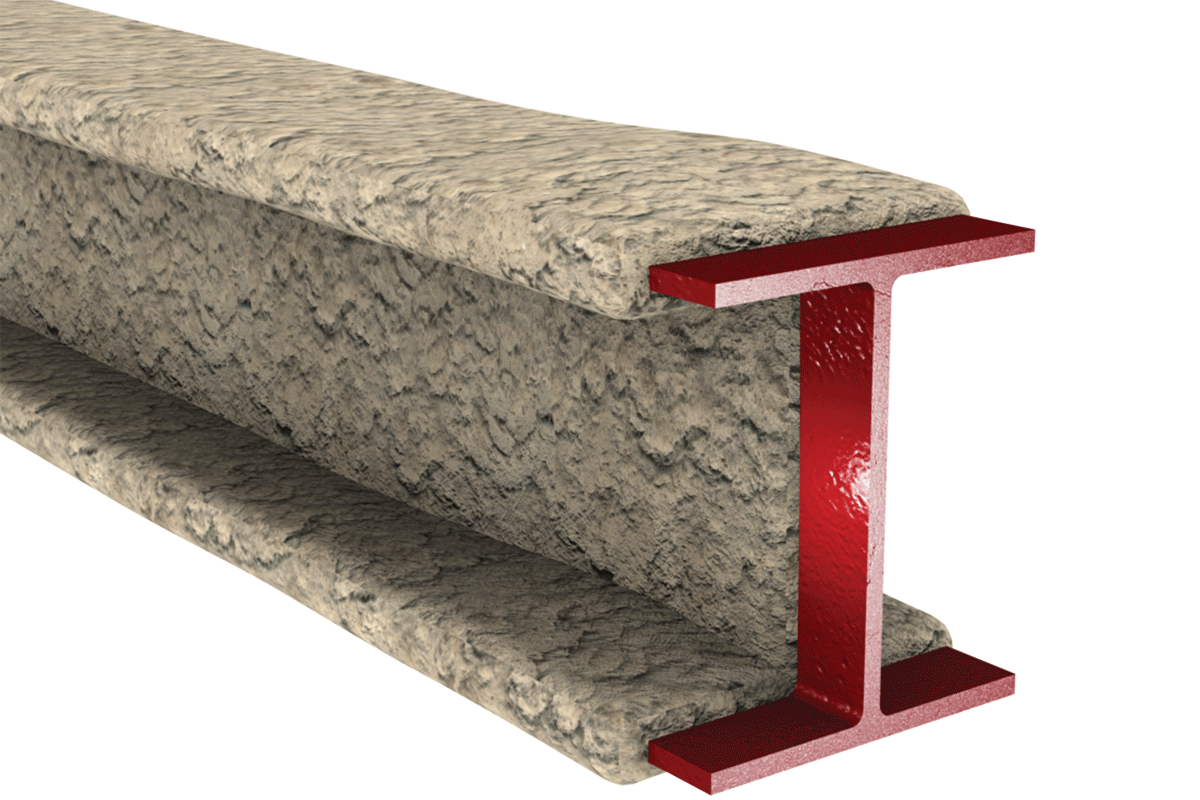
Fire stopping sprays consist of cement fibres, vermiculite and plaster. They are particularly suitable for the structures where aesthetics is not so important, although the appearance may be corrected with an optional final façade coat. Prior to application the steel may be coated with a primer, although this is not necessary, whereas the binding layer of an acrylic copolymer is required. The spray is applied on site by machine spraying and the layer of thickness ranges from between 10 and 70 mm. The worksite may be quite dirty. For a larger layer of thickness, an additional reinforcing mesh is required. The main advantage of fire stopping sprays is low price and good sound absorption. Fire stopping sprays can reach a fire resistance of up to R 240.
Contact our technical support team with your questions on passive fire protection solutions, our products and systems or installation advice...
Find the product datasheets, system brochures, Declarations of Performance, installation manuals and other documents you need to get the job done.
Follow #PromatAsiaPacific on social media: